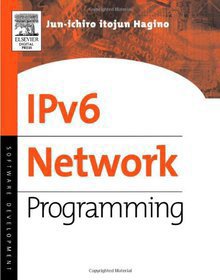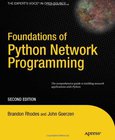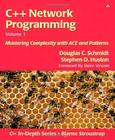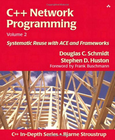IPv6 Network Programming

Book Details:
| Publisher: | Digital Press |
| Series: | MIX |
| Author: | Jun-ichiro itojun Hagino |
| Edition: | 1 |
| ISBN-10: | 1555583180 |
| ISBN-13: | 9781555583187 |
| Pages: | 376 |
| Published: | Nov 01 2004 |
| Posted: | Nov 19 2014 |
| Language: | English |
| Book format: | |
| Book size: | 3.13 MB |
Book Description:
This book contains everything you need to make your application program support IPv6. IPv6 socket APIs (RFC2553) are fully described with real-world examples. It covers security, a great concern these days. To secure the Internet infrastructure, every developer has to take a security stance - to audit every line of code, to use proper API and write correct and secure code as much as possible. To achieve this goal, the examples presented in this book are implemented with a security stance. Also, the book leads you to write secure programs. For instance, the book recommends against the use of some of the IPv6 standard APIs - unfortunately, there are some IPv6 APIs that are inherently insecure, so the book tries to avoid (and discourage) the use of such APIs. Another key issue is portability. The examples in the book should be applicable to any of UNIX based operating systems, MacOS X, and Windows XP. * Covers the new protocol just adopted by the Dept of Defense for future systems* Deals with security concerns, including spam and email, by presenting the best programming standards * Fully describes IPv6 socket APIs (RFC2553) using real-world examples * Allows for portability to UNIX-based operating systems, MacOS X, and Windows XP
Download Link:
Related Books:
Foundations of Python Network Programming
The comprehensive guide to building network applications with Python
2nd Edition
This second edition of Foundations of Python Network Programming targets Python 2.5 through Python 2.7, the most popular production versions of the language. Python has made great strides since Apress released the first edition of this book back in the days of Python 2.3. The advances required new chapters to be written from the ground up, and others to be extensively revised. You will learn fundamentals like IP, TCP, DNS and SSL by using working Python programs; you will also be able to familiarize yourself with infrastructure components like memcached and message queues. You can also delve into network server designs, and compare threaded approache...
C++ Network Programming Volume 1
Mastering Complexity with ACE and Patterns
As networks, devices, and systems continue to evolve, software engineers face the unique challenge of creating reliable distributed applications within frequently changing environments. C++ Network Programming, Volume 1, provides practical solutions for developing and optimizing complex distributed systems using the ADAPTIVE Communication Environment (ACE), a revolutionary open-source framework that runs on dozens of hardware platforms and operating systems. This book guides software professionals through the traps and pitfalls of developing efficient, portable, and flexible networked applications. It explores the inherent design complexities of concurrent networked applications and the tradeoffs that must be considered when working to master them....
C++ Network Programming Volume 2
Systematic Reuse with ACE and Frameworks
Do you need to develop flexible software that can be customized quickly? Do you need to add the power and efficiency of frameworks to your software? The ADAPTIVE Communication Environment (ACE) is an open-source toolkit for building high-performance networked applications and next-generation middleware. ACE's power and flexibility arise from object-oriented frameworks, used to achieve the systematic reuse of networked application software. ACE frameworks handle common network programming tasks and can be customized using C++ language features to produce complete distributed applications. C++ Network Programming, Volume 2, focuses on ACE frameworks, providing thorough coverage of the concepts, patterns, and usage rules that form their structure. Th...
2007 - 2021 © eBooks-IT.org



